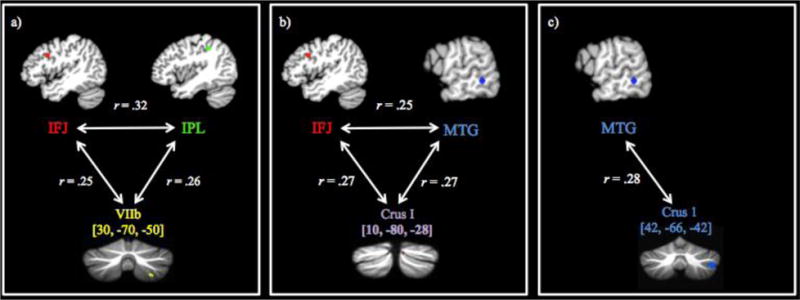Figure 3.

Functional connectivity results between the cerebral regions within the reading network and the cerebellum. (A) Functional connections between the inferior frontal junction from the Neurosynth reading map and the inferior parietal lobule from the ALE phonological > semantic map showed functional connectivity convergence with a cerebellar region localized in lobule HVIIb/Crus2 (cerebellar coordinate is the mean centroid voxel from the IFJ and IPL connectivity analyses). (B) Functional connectivity between the inferior frontal junction and the middle temporal gyrus from the ALE semantic > phonological map showed functional connectivity convergence to a medial section of the cerebellum localized around Crus1/Crus2 (cerebellar coordinate is the mean centroid voxel from the IFJ and MTG connectivity analyses). (C) The middle temporal gyrus also revealed a direct connection to a more posterior-lateral cerebellar region of lobule Crus1. The identified cerebellar regions were structurally normalized and localized using a hi-resolution Spatially Unbiased Atlas Template (SUIT; J. Diedrichsen et al., 2011; Jörn Diedrichsen, Balsters, Flavell, Cussans, & Ramnani, 2009). Time-series correlation for peak centroids was set at a voxel-wise threshold of r > .25, and cluster volume of 50 mm3.
